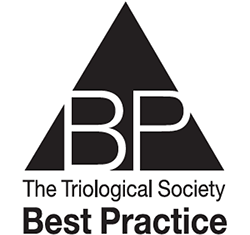 TRIO Best Practice articles are brief, structured reviews designed to provide the busy clinician with a handy outline and reference for day-to-day clinical decision making. The ENTtoday summary below includes the Background and Best Practice sections of the original article. To view the complete Laryngoscope articles free of charge, visit Laryngoscope.com.
TRIO Best Practice articles are brief, structured reviews designed to provide the busy clinician with a handy outline and reference for day-to-day clinical decision making. The ENTtoday summary below includes the Background and Best Practice sections of the original article. To view the complete Laryngoscope articles free of charge, visit Laryngoscope.com.
Explore This Issue
August 2023BACKGROUND
Surgical procedural training originated from the Halstedian apprenticeship model, which relies on sheer volume for graded responsibility to achieve “see one, do one, teach one.” Modern surgical education has evolved over time with more structured curricula and set length of training, but dependence on the Halstedian model remains more prevalent in procedure-based teaching.
In addition to work–hour restrictions impacting operative case volume (Innov Surg Sci. 2019;4:7–13), the clinical environment has changed to emphasize clinical productivity and patient safety. Due to these changes, medical education has moved away from cumulative experience to more competency-based assessments (J Surg Res. 2020;246:342-378).
BEST PRACTICE
Motor skills are acquired through three stages of task intellectualization, integration, and autonomy. Deliberate feedback and practice are necessary, but there is no evidence that the number of practices reproduces the skills acquired. In fact, Peyton’s 4-step model of demonstration, deconstruction, comprehension, and performance has been shown to be a valid method of teaching complex motor skills.
The evidence indicates that the current surgical training environments require structured models with focused standardized feedback and assessment to consistently advance surgical skill development in our trainees. More widespread implementation of these types of strategies in otolaryngology surgical training would be beneficial in furthering procedural development.